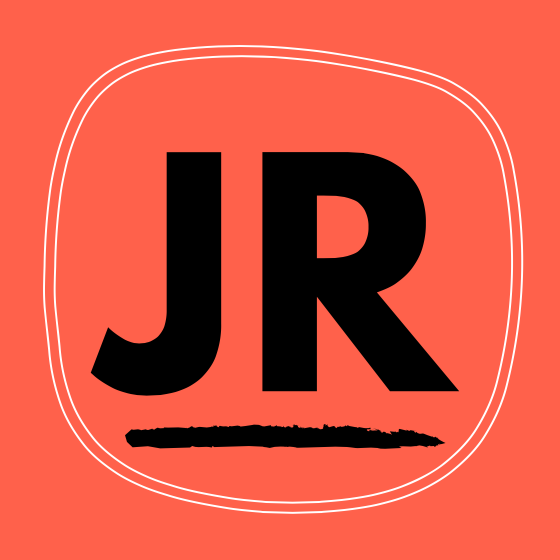How My Hybrid of PKM, PARA, Getting Things Done, and Zettelkasten Helps Me Think More Productively

Productivity and organizing one's ideas, thoughts, and notes have taken on a new life. Arguably, more so than before in recent memory. The advantages of technology have encouraged us to rethink how we are productive and what we deem effective. Not only that, but technology has also inspired us to re-examine previous analog methods and adopt them to a new digital world.
For a while, a guru was popping up every six months claiming their method was the best to help us maximize our productivity. David Allen, who created the Getting Things Done personal productivity system, was no longer one of the few voices around. He was now one of many voices.
I have tried to learn their ends and outs with every trend. Some of them went over my head, and some felt too simple at first, but then when instituted, turned out more complicated than I had initially expected.
The process felt like a rollercoaster ride, especially when I decided to abandon what I had been doing and see what others were recommending. I spent much time researching, attempting the methods, and needing to be more productive.
I concluded that a hybrid method worked best for me. I take what works for me from P.A.R.A., I consider some of the things in the P.K.M., I still love Getting Things Done's Inbox, and then I take Zettelkasten for some aspects while abandoning the rest.
The Methods
PARA
P.A.R.A. is an acronym for Projects, Actions, Resources, and Archives. It is a simple and effective method for organizing tasks, prioritizing them, and tracking progress. The P.A.R.A. method is a powerful tool for individuals and teams looking to improve their time management skills and achieve their goals organizationally and efficiently.
One of the main benefits of the P.A.R.A. method is that it helps individuals prioritize their tasks and focus on what is most important. Individuals can prioritize and organize their to-do lists by categorizing tasks into Projects, Actions, Resources, and Archives. This can help them avoid distractions, save time, and increase productivity.
The P.A.R.A. method is a powerful tool for individuals and teams looking to improve their time management skills and achieve their goals. Its clear and structured approach provides a convenient way to prioritize tasks, track progress, manage resources, and archive work once completed. Whether you are a busy professional, student, or homemaker, the P.A.R.A. method can help you take control of your time and live a more productive and fulfilling life.
PKM
Personal Knowledge Management (PKM) is a process that involves the collection, organization, and use of information to increase productivity and improve decision-making. The benefits of P.K.M. for productivity and success are numerous. P.K.M. provides a systematic and organized approach to managing their knowledge. Individuals can reduce the time and effort required to find information and focus on the tasks most important to their success.
Personal knowledge management is critical for individuals and organizations looking to increase productivity and improve decision-making. With its numerous benefits, including staying informed and up-to-date, increasing productivity and efficiency, promoting continuous learning and growth, and providing a competitive advantage, P.K.M. is an essential tool for anyone looking to succeed in today's fast-paced and constantly changing world.
Zettelkasten
Zettelkasten is a German word that means "slip box." It is a note-taking method that has recently gained popularity as a powerful tool for organizing and managing knowledge. Zettelkasten is a system of note-taking that emphasizes the creation of interconnected and non-linear notes, as opposed to traditional linear notes.
Zettelkasten is a revolutionary note-taking and knowledge management approach that provides numerous benefits for individuals and organizations. With its emphasis on interconnected and non-linear notes, Zettelkasten can help individuals develop a deeper understanding of their topic, promote creativity and critical thinking, provide a flexible and scalable system for organizing and managing knowledge, and promote self-reflection and personal growth. Whether you are a student, professional, or someone looking to improve your knowledge management skills, Zettelkasten is a powerful tool to help you achieve your goals.
Getting Things Done
David Allen's Getting Things Done has been around since the early aught. I remember reading his book and not seeing its value, only to pick it up again and find some value in it later and putting everything first in an Inbox that still needs to be tagged or categorized as a way to streamline how I manage my work and personal life.
The benefit is waiting until the end of the week to organize everything in the Inbox elsewhere. Or something like that. The Inbox is what I found most beneficial from the Getting Things Done productivity system.
My Hybrid System

After deep-diving through all four methods, I developed a hybrid system.
I have organized my folders into P.A.R.A.
- Projects
- Areas
- Resources
- Archives
I rarely, if ever, use my active projects folder. I'm still trying to wrap my head around its usefulness. Areas, a bustling area of my life, are where most of my thoughts and life live.
In the Areas folder, I have subfolders for "Career Management," my "House2Home" area, my "Journal" area, my area for my daily "Stoic Reflections," my "Meetings," etc.
My Resources folder includes my Book Notes, my connection to Readwise, and my Readwise Reader. What are Readwise and Readwise Reader? These two apps from Readwise provide an automated way to save highlights from ebooks, save highlights from articles and capture them to tools like Obsidian or Notion.
I have a few archived items in my Archives folder, but only a few. In 2022, I purged my notes and folders and realized I was hoarding notes I had never read.
Organizing notes like this has been called treating one's note-taking system like a librarian. Is that true? But even though I had close to thousands and thousands of notes, I found myself using them.
The purge made me refocus and keep only the notes that I needed. I needed a lot of notes and would save them for later, but I did not need them. Adopting daily notes helps me focus on what I need while attaching notes to date.
Outside of PARA exists my Inbox. The Inbox is similar to Getting Things Done. I treat my Inbox folder as my default location for random or misc notes. If I find an area for a note in my Inbox, I will move it there. Until then, any "unfoldered" or untagged note remains in the Inbox.
I say "unfoldered" because I always ensure any note I create or write has a tag.
I still value tags as a way to help me organize. Once upon a time, tags were my only way to keep things organized. Now, no longer.

My Bullet Journal borrows from Zettelkasten and Bullet Journal. Here I keep my daily note while keeping everything treated.

The Obsidian Calendar plugin provides a visual way to find my notes associated with their date. With Zettelkasten, I utilize Obsidian's built-in ability to link a note within a note.
Linking a note within a note sometimes is helpful when putting together a large concept or a map of content, also known as a map of content or a M.O.C. M.O.C. take linking notes to another level. However, this ability to link is a more streamlined and automated way to the Zettelkasten methodology than the analog method of its creator.
My Zettelkasten-inspired Bullet Journal is where I start. I have a daily note connecting to a weekly note and a monthly one connecting to a large-year note.
Conclusion
My takeaway: find your needle in the productivity haystack. There are so many methodologies nowadays. Some are good, and some are bad. However, there is value in reading about them and figuring out what works best for you. It might take some work. A few missteps here and there. But end in the end, and you will find a way to do things that work best for you.







Member discussion